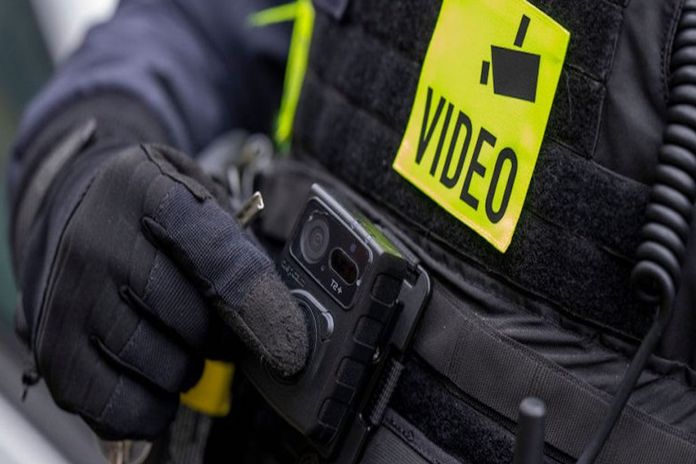– Body camera video equivalent to 25 million copies of “Barbie” is collected but rarely reviewed. Some cities are looking to new technology to examine this stockpile of footage to identify problematic officers and patterns of behavior.
By Umar Farooq
Over the last decade, police departments across the US have spent millions of dollars equipping their officers with body-worn cameras that record what happens as they go about their work. Everything from traffic stops to welfare checks to responses to active shooters is now documented on video.
The cameras were pitched by national and local law enforcement authorities as a tool for building public trust between police and their communities in the wake of police killings of civilians like Michael Brown, an 18 year old black teenager killed in Ferguson, Missouri in 2014. Video has the potential not only to get to the truth when someone is injured or killed by police, but also to allow systematic reviews of officer behavior to prevent deaths by flagging troublesome officers for supervisors or helping identify real-world examples of effective and destructive behaviors to use for training.
But a series of ProPublica stories has shown that a decade on, those promises of transparency and accountability have not been realized.
One challenge: The sheer amount of video captured using body-worn cameras means few agencies have the resources to fully examine it. Most of what is recorded is simply stored away, never seen by anyone.
Axon, the nation’s largest provider of police cameras and of cloud storage for the video they capture, has a database of footage that has grown from around 6 terabytes in 2016 to more than 100 petabytes today. That’s enough to hold more than 5,000 years of high definition video, or 25million copies of last year’s blockbuster movie “Barbie.”
“In any community, body-worn camera footage is the largest source of data on police-community interactions. Almost nothing is done with it,” said Jonathan Wender, a former police officer who heads Polis Solutions, one of a growing group of companies and researchers offering analytic tools powered by artificial intelligence to help tackle that data problem.
The Paterson, New Jersey, police department has made such an analytic tool a major part of its plan to overhaul its force.
In March 2023, the state’s attorney general took over the department after police shot and killed Najee Seabrooks, a community activist experiencing a mental health crisis who had called 911 for help. The killing sparked protests and calls for a federal investigation of the department.
The attorney general appointed Isa Abbassi, formerly the New York Police Department’s chief of strategic initiatives, to develop a plan for how to win back public trust.
Source: Homeland Security News Wire, originally published 6 February 2024





